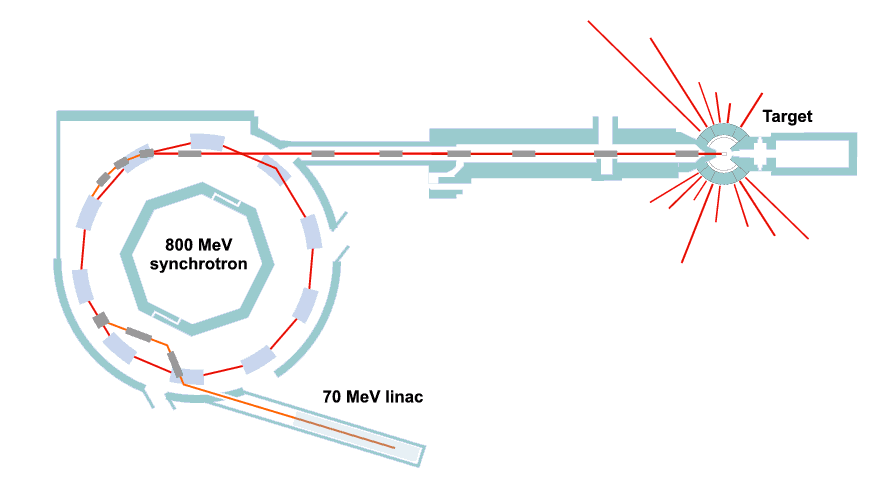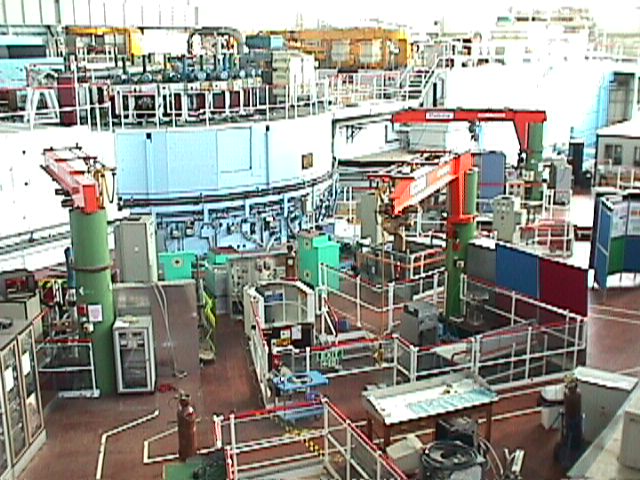 |
Production of Spallation Neutrons |
 |
Production of Spallation Neutrons |
Production of Spallation Neutrons
A schematic diagram of a pulsed source (based on ISIS, UK) is shown below:

Pulsed neutron sources have some similarities to synchrotron sources in that both accelerate particles in a ring, but there the similarity ends. Pulsed neutron sources uses a supply of charged heavy particles, typically H− ions, which are accelerated in a linear accelerator (known as a linac). After acceleration, the H− ions are fired through a gold foil, which strips off the electron thus producing a medium-energy proton beam, which is then further accelerated in the main ring to higher-energies. The main beam is then diverted at a fixed frequency, say 50 Hz, into a water-cooled heavy-metal target. Collision of the proton beam into the nuclei of the metal atoms results in spallation, with destruction of the metal nucleus into two or three smaller nuclei plus several neutrons.
The target is usually made from either a third-row transition metal such a tantalum (Ta) or a transuranic element such as uranium (U). Note that in contrast to the production of neutrons at a reactor source, the target metal is not required to be naturally fissile, though the flux of neutrons produced does correlate with the atomic weight of the element used. In practice, the thermal and mechanical properties of the metal are also relevant factors in the determination of target lifetime so that in practice a non-fissile metal such as tantalum is the favoured material.
Since high energy corresponds to high temperature, unmoderated spallation neutrons are termed epi-thermal (very hot), in contrast to those produced at reactor sources, which are termed thermal. As with reactor sources, a neutron moderator is required to shift the wavelength spectrum of the neutrons to the desired range, but in this case a moderator is only used to slow the neutrons down. Typical neutron moderators at spallation sources are solid methane (CH4) or liquid/solid hydrogen (H2). The neutrons pass through the moderator on their way to the neutron diffractometers, which are arranged around the target area, as shown below for the neutron powder diffractometers HRPD, GEM, and POLARIS at the ISIS spallation source in the UK:

The photograph below shows a typical view of the upper floor area around the target at ISIS. Note that the height of the beam and, consequently, the instruments too are all below the "floor level" seen in the photograph. Some features concerning the design of powder neutron diffractometers at spallation sources are discussed on the next page.

|
© Copyright 2000-2006.
Birkbeck College, University of London.
|
Author(s):
Jeremy Karl Cockcroft Simon Jacques |